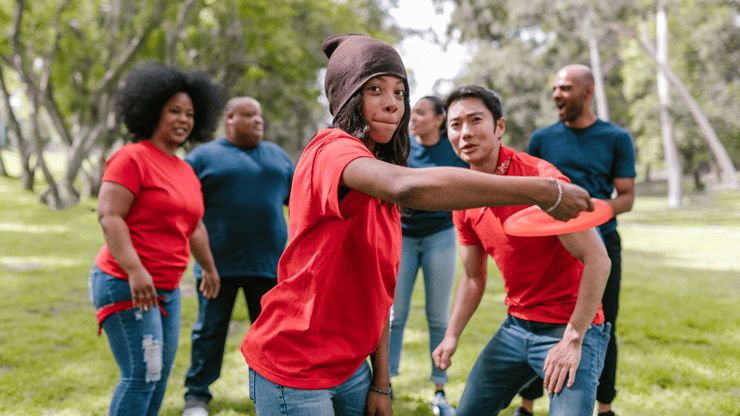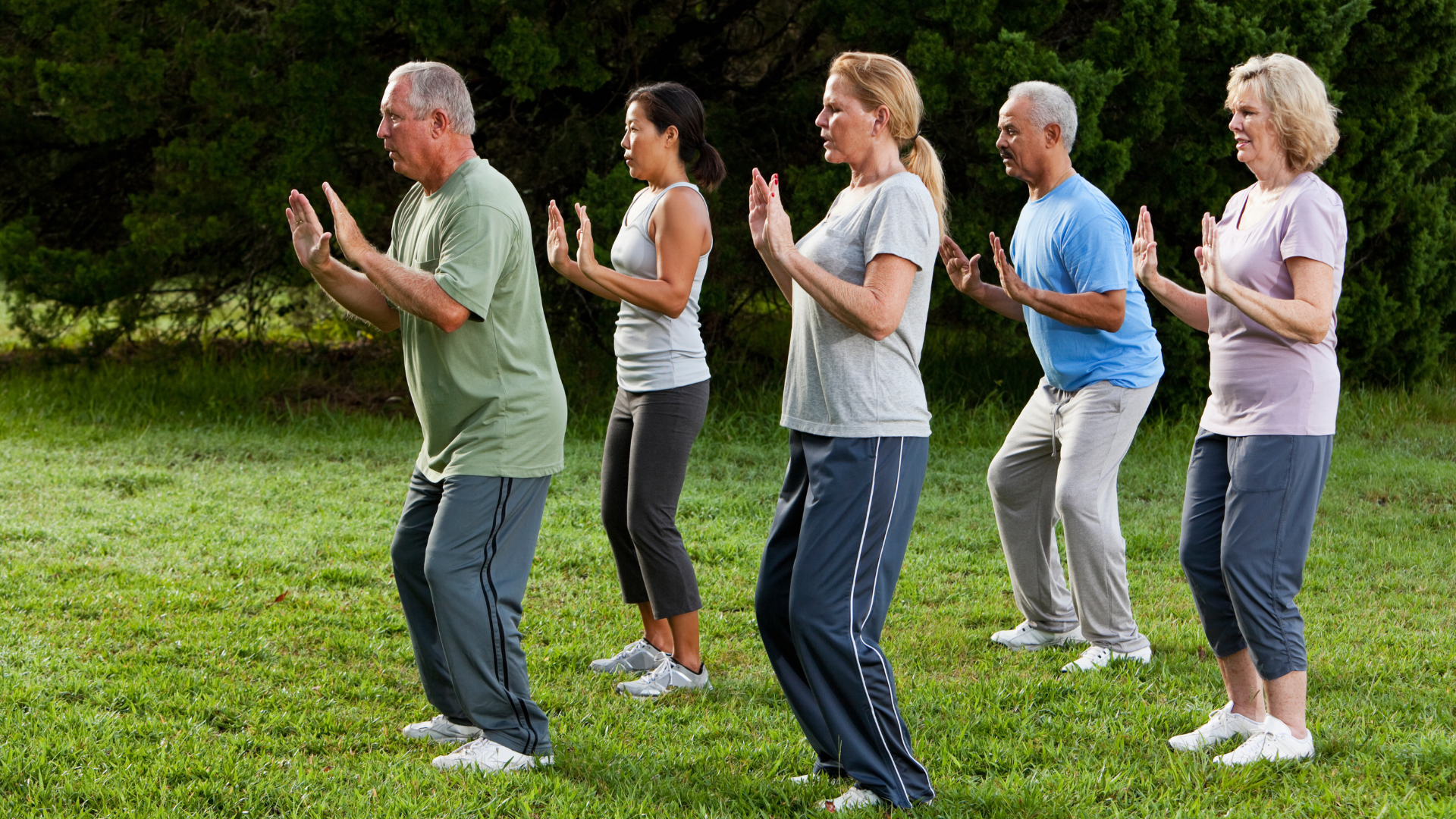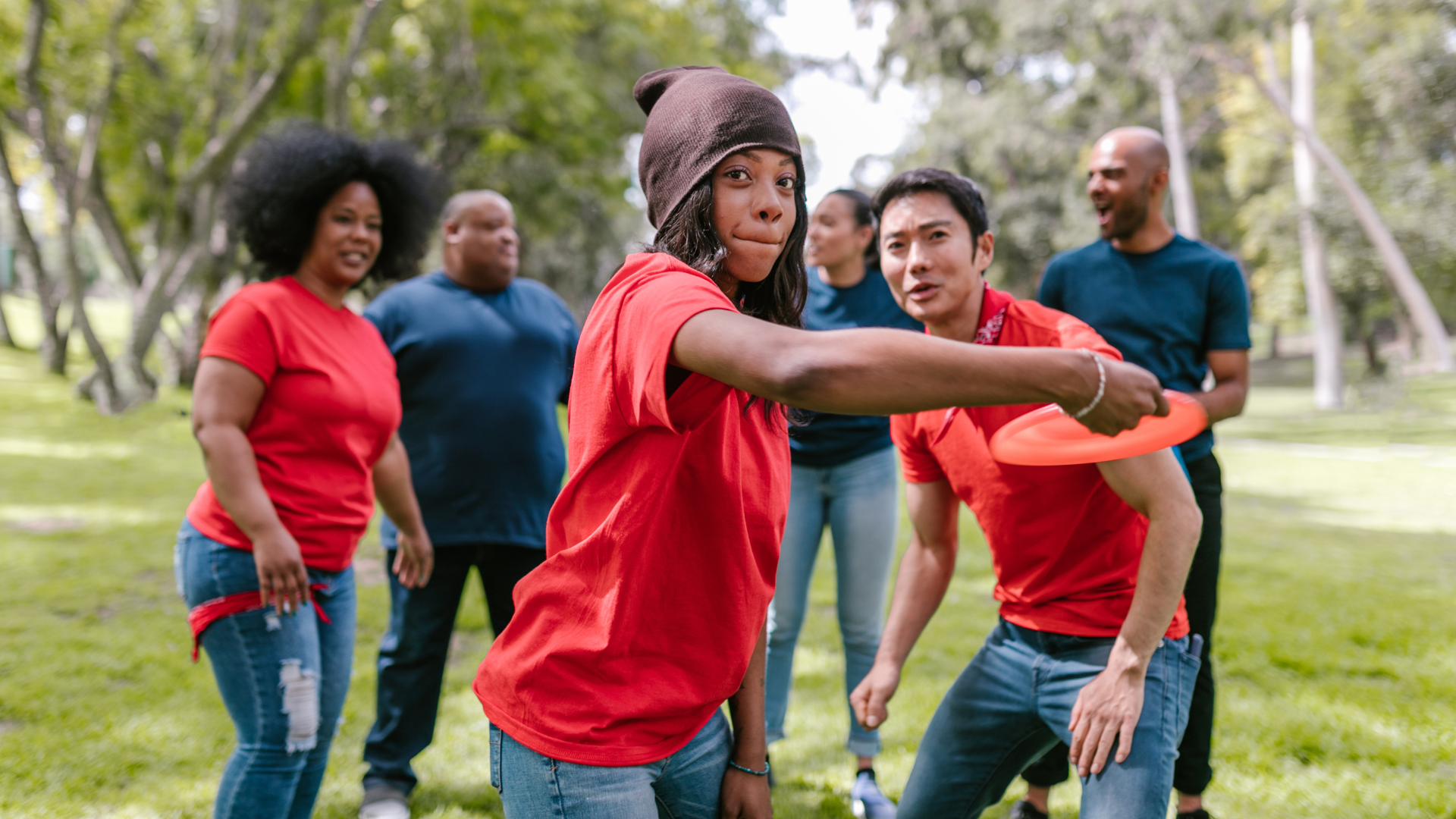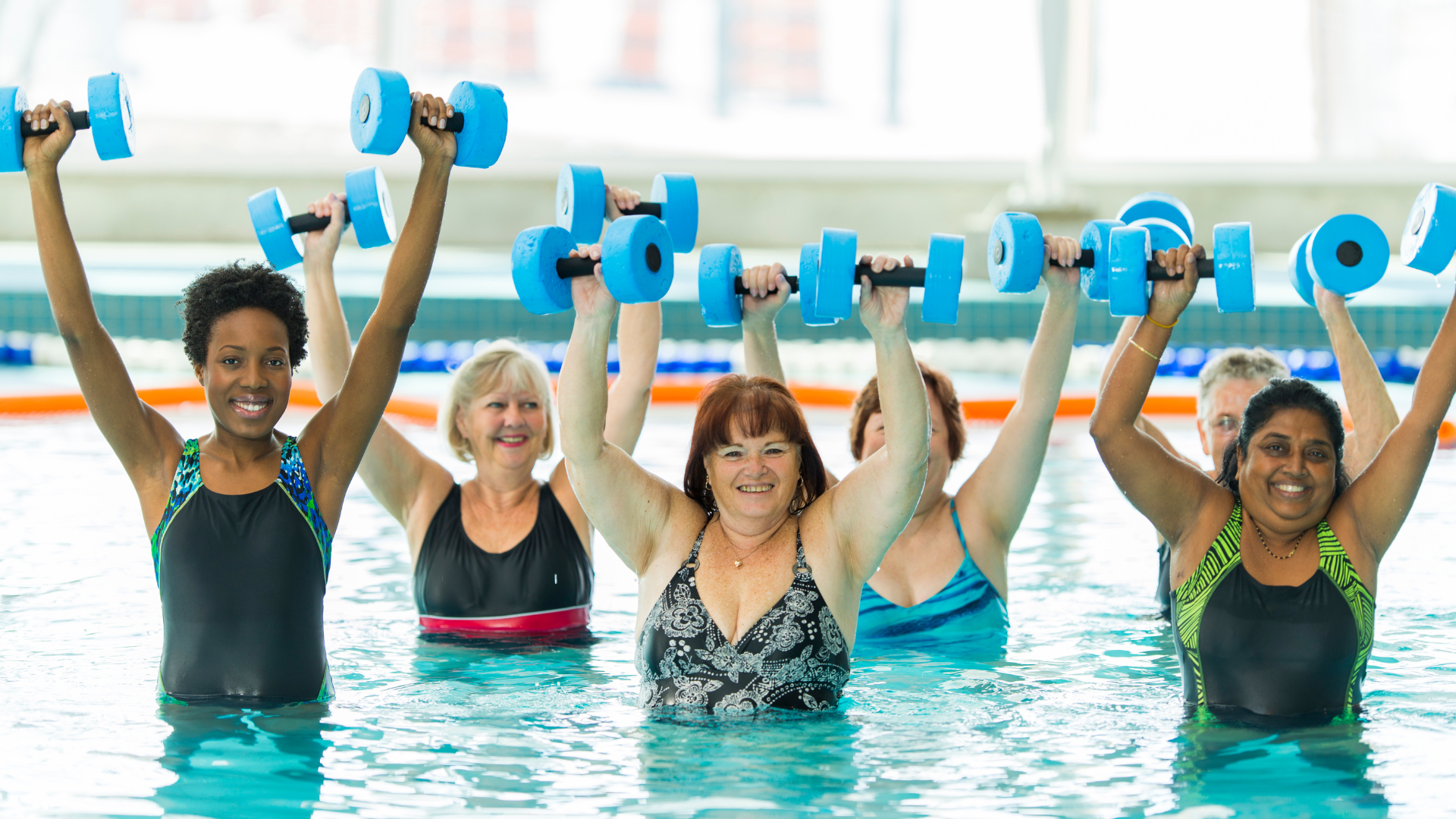
As a Realizing DPP lifestyle coaching community member, you know the benefit of consistent, even if not arduous, exercise.
One of the most rewarding aspects of being a lifestyle coach is being a primary source for helping clients find a level of exercise that not only suits their lifestyle but continues to promote healthy habits for those at risk for developing Type 2 diabetes.
As coaches, we have to do more than sell our participants on how fun exercising can be — sometimes, you will have to go on the journey with them.
That means trying out the various activities and exercise types before you bring them to your cohort. It’s a great way to gain first-hand knowledge of the exercises you suggest to your clients. Bringing your cohort a variety of exercise activities can also help participants get over that hump from unsure and disinterested to living a more active lifestyle. It’s all about finding that sweet spot of motivation and interest.
At Realizing DPP, you are an agent of change, helping clients prevent Type 2 Diabetes by leading a fulfilling life. To help you be the best lifestyle coach you can be, we have some fun, unique exercise activities to bring your clients that they might not have tried.
How Many Weekly Minutes of Exercise Help Prevent Type 2 Diabetes?
The American Diabetes Association recommends 150 minutes of moderately intense exercise a week.
To put it another way, it only takes two hours and thirty minutes of exercise over seven days to improve glucose levels and reduce the risk of cardiovascular disease, and improve bone strength and mental acuity.
The benchmark for moderate aerobic activity can be easily defined as the ability to complete a sentence but having trouble singing a song while working out.
For most, that’s just several brisk walks a week or maybe even bicycling into and home from the office. And while 150 minutes should be a completely doable amount of time for most anyone, the reality is that regular exercise can be challenging for some, especially those who don’t already lead an active lifestyle, regular exercise can be challenging.
As a DPP Lifestyle coach, you aren’t just prepared to help your cohort attempt to achieve this goal — you are a change maker ready to empower your participants and assist them in overcoming adversity.
Functional Exercise Is a Starting Place for Diabetes Prevention
Some participants, even if not medically limited, are simply adverse to exercise. Those reasons could be tied to any number of instances that happened in their life, but it’s not always necessary to dig down to the root of the issue to solve the problem.
Being an active and positive listener is a great place to start with helping your cohort adopt better exercise habits, but sometimes getting participants to increase their physical activity requires a change of perspective.
Before locating a nearby activity, you can excite them enough to try for thirty minutes to an hour and help participants understand the exercise opportunities they encounter throughout the day.
These exercises include simple ones such as taking the stairs, even if it is just for a flight or two when they arrive at work. By taking advantage of small moments of increased activity, like walking around the office a few times an hour or parking further from the office or store, your participants can facilitate major changes.

Benefits of Tai Chi
Tai Chi is an excellent bridge to new exercise activities because it is very low impact, yet it has been shown to improve flexibility and overall health.
While Tai Chi is often considered a form of meditation because its teachings are about aligning the mind and spirit, the movements and flows of Tai Chi are excellent for aging participants, as well as those with other physical limitations. Each movement flows directly into the next without pause so that even though the moves are gentle, the body remains aerobically engaged.
Any opportunity that helps create a consistent increase in aerobic activity will help open their eyes to the possibility of exercise overall — a small stepping stone is still a stepping stone.
Encourage New Movements
Type 2 Diabetes is preventable through lifestyle changes, and increased cardiovascular activity is a key aspect of those changes. In a 2020 study, the Mayo Clinic published a review highlighting how exercise can reduce dependence on insulin and glucose-lowering medications for those with Type 2 Diabetes and working through a prediabetes diagnosis.
Hiking Doesn’t Mean a Mountain
When some people hear the word hike, they envision arduous and potentially dangerous mountains with twisting trails and bears. For your participants, hiking can imply a daily walk in nature away from a gym or their neighborhood. Introduce participants to hiking by locating a nearby park to walk with them for thirty to forty-five minutes
You won’t be there every time but as you’re helping participants leave their comfort zones, do so by easing them into new routines until they feel comfortable returning on their own. Build the pathway to Type 2 Diabetes prevention alongside your participants.

Remember Frisbee?
Everyone had one in their car trunk or tucked in the back of a closet growing up, but how long has it been since you’ve tossed a Frisbee?
Playing Frisbee is an excellent low-intensity workout for participants uncomfortable or anxious about anything appearing overly strenuous. In your next session, break out a Frisbee as an opportunity to show your participants how much their bodies can do.
Frisbee can be played almost anywhere, making it an easily accessible activity. Start by pairing off your participants and having them stand a short distance apart to toss the Frisbee back and forth. Once your cohort has the basics under control, take a few steps apart from each other until you reach a healthy distance apart.
The sneaky cardiovascular elevating element of playing Frisbee is that there’s a lot of chasing after errant Frisbees and off-target throws, but it adds up naturally. After thirty minutes, your participants will have broken a nice sweat, signaling you’ve helped them reach a high activity level.
Disc Golf Is the Best of Frisbee and Golf
For those participants who start to enjoy Frisbee but want something that requires a little more skill or can include an element of competition, there is Frisbee golf.
This fringe sport is often more exciting to watch and play than golf, but it’s the same game at heart. Each participant tries to get their Frisbee into a chain-supported bucket in the least amount of throws.
There are many Disc Golf, as it is officially called, public courses scattered throughout the country, which means there’s probably one close to you and your participants. Disc Golf involves not only increasing cardiovascular work as players effort to through the Frisbee far to the cup; there is also the added benefit of walking the course.
Hula Hooping for Type 2 Diabetes Prevention
Playing Frisbee isn’t the only seemingly retro activity that can inject great fun into any aerobic activity. The Hula Hoop has been having a bit of a renaissance as more personal trainers and fitness experts build exercise classes around the Hula Hoop.
As you kick-start a new exercise journey with your participants, consider introducing a Hula Hoop to the fun. It’s a low-impact movement that can get your heart going. Try it out by having a casual competition for who can complete the most hoop spins before the hoop hits the ground. In no time, they’ll be laughing and hooping, but most of all exercising.
Frisbee, Disc Golf, and Hula Hooping don’t require any innate athletic skill; they can all be done by people of any age. This is why you should consider carrying a frisbee or a hoop in your trunk when looking for new activities to get your participants out into the sunshine.
Encourage Your Participants to Try Group Exercise
The only thing more fun than exercising alone is doing it in a group. The shared energy that flows through a group fitness class can be exhilarating!
Exercise helps manage prediabetes to help ensure it doesn’t become Type 2 Diabetes by triggering muscles and organs to begin uptaking glucose from the bloodstream. This can immediately lower elevated glucose levels and is a key reason that taking a walk after a meal is always a good practice.
Another way to add more strenuous exercise into your participants’ lives is to introduce them to group exercise classes. Traditional group exercise can seem boring, and the intensity level, even for beginning classes, can appear daunting.
But if we want our participants to do more than settle for a light walk, there are some exciting avenues of group exercise you can encourage them to explore:
Zumba Classes Can Get Your Participants Up and Dancing
Dancing doesn’t always require a partner, but it’s always a fun exercise activity. Zumba is a dance party hidden inside a group aerobic class.
Sometimes you just need to shake your hips, and Zumba classes deliver on that need.
Zumba group fitness classes have maintained their popularity for many years. Their mantra is to take the work out of workouts, and they do this through an exclusive dance soundtrack and rockstar instructors who drive a positive, supportive, and fully exciting energy for each 45-minute class.
The mix of low and high-intensity movements helps people of any fitness level regardless of age. One way to introduce participants to the fun of Zumba is to utilize Zumba’s twelve-minute introduction to their basic steps. It’s a video they have for free on their website that you can incorporate into a training session or encourage your participants to do at home.
A key aspect of being a great DPP lifestyle coach is connecting with your participants on a mental level. Dancing is an expressive movement that can encourage participants to open up more and become their fullest selves.
Imagine how good it will feel to inspire a more positive connection to group exercise through Zumba — your participants will no doubt thank you.

Water Aerobics Is a Fun Alternative Group Exercise
Another type of low-impact group aerobics class will take a change of clothes.
Water aerobics classes are still frequently offered at YMCAs and other facilities with a pool. Classes are led by an instructor, and participants are all in a pool with a depth of an average of 3.5 to 4.5 feet. Additionally, classes are low impact and guided by an instructor.
There is an almost calming element to water-based movement exercises that many participants will enjoy.
Another great thing about water aerobics is that being able to swim is not a requirement. Some participants, however, may have a persistent fear of water even if they know they can stand in it. If that happens, this particular exercise may not be the right choice for them, but they may also see it as an opportunity to overcome a fear while striving for better health.
Water aerobics is a great exercise option for participants with limited mobility because it still helps positively elevate their heart rate.
Your Coaching Knowledge Is a Tool to Lean On
As a lifestyle coach, you are a purveyor of fun, and helping participants find fun in exercise is just another day for you. DPP lifestyle coaches are trained to be aware of the individual nature of each participant. That training includes modifying exercises and activities to match lifestyle, previous medical history, and injuries.
Coaching participants into a new and more consistent exercising lifestyle involves adjusting to their personal limitations. When starting out, spend time discussing your participants’ relationship with exercise.
Ask them questions about what they like and used to like to do. Any questions that deliver insight into participants’ feelings about certain activities, their willingness to try new ones, and what limitations they might have.
All that information will help you create exciting exercise opportunities built around their interests yet modified for their aerobic capabilities.
It’s a wonderful way to build a connection with your participants, who sometimes only need support and encouragement to unlock a healthier lifestyle. As a DPP lifestyle coach, being a positive influence and voice is half the fun.
Engage in the RDPP Community for More Coaching Tips
Being a DPP lifestyle coach is incredibly rewarding. To be a mentor, educator, and at times, a personal trainer for those working to prevent Type 2 diabetes.
The DPP lifestyle coaching community is active and dedicated, even for those who are no longer active coaches. This private network will continue to enrich your toolset of educating and supporting participants in their journey to preventing Type 2 Diabetes.
Our community is made up of current and past coaches, all of whom share the love for helping those in need and delivering improved lifestyles to all their participants. It broadens your knowledge and acts as a level of continuing education for all members. The exclusive learning opportunities and tips we offer can’t be found by digging around online, as well as the support system and tools you need to grow as a coach and reach the heights you desire.
So, if you’re a coach in Mississippi or the surrounding area and are ready to see how you can impact the lives of so many, join the Realizing DPP network today. Together, we can make change happen.


